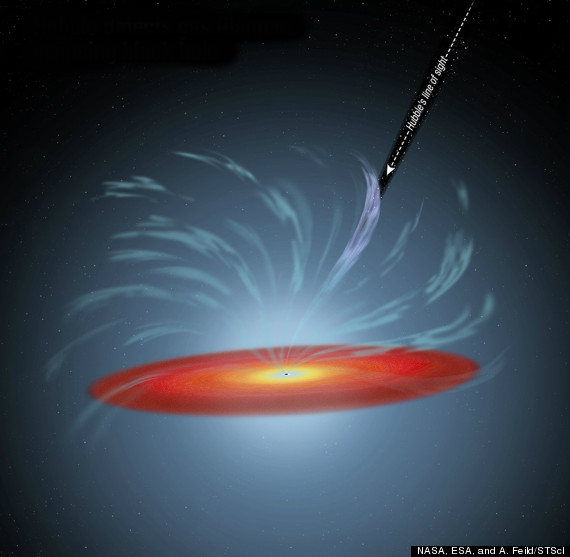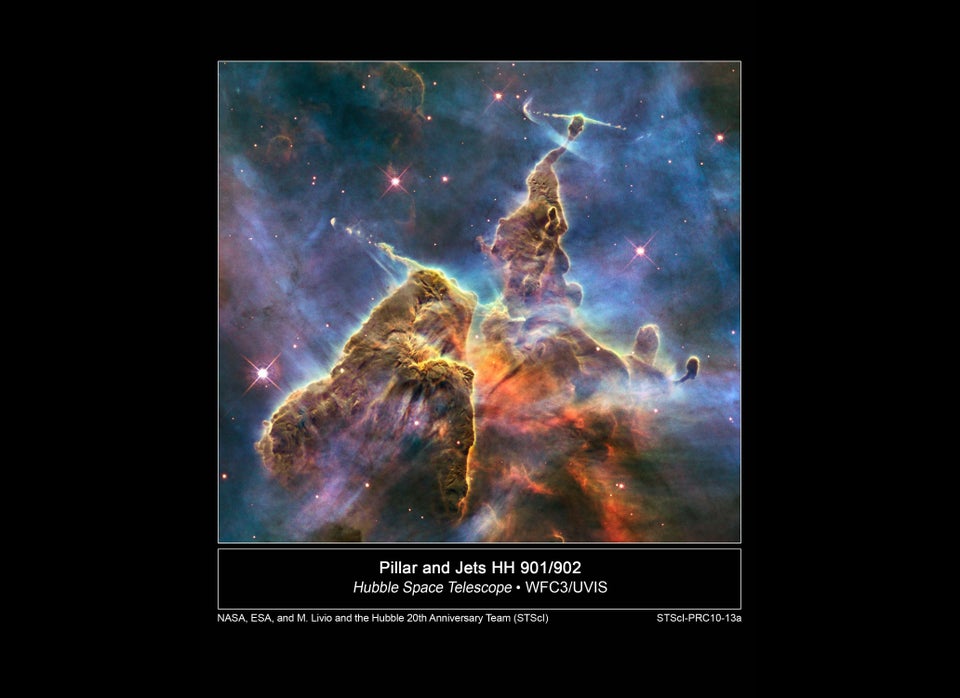Call it a severe case of gas--on a cosmic scale.
Data from multiple space observatories show that gas is spewing at very high speed from the supermassive black hole at the heart of a galaxy some 245 million light-years from Earth.
The discovery comes as a bit of a surprise. While there's nothing odd about "winds" of ionized gas flowing from black holes, the stream of gas is moving away from galaxy NGC 5548 at speeds of up to 5,000 kilometers per second (11 million miles per hour). That's way faster than the galaxy's "persistent" wind, which blows at about 1,000 kilometers a second.

This illustration shows a cloud of material above the supermassive black hole and accretion disk at the center of galaxy NGC 5548. Numerous other filaments twist around the black hole as they are swept away by radiation "winds."
The "clumpy" gas stream changed position in 2013 and is now blocking 90 percent of the black hole's X-ray emissions.
"There are other galaxies with similar streams of gas flowing outward from the direction of its central black hole, but we've never before found evidence that the stream of gas changed its position as dramatically as this one has," Gerard A. Kriss, an associate astronomer at the Baltimore-based Space Telescope Science Institute, said in a written statement "This is the first time we've seen a stream like this move into our line of sight. We got lucky."
The discovery may shed new light on how supermassive black holes interact with their host galaxies, NASA said.
The observational data came from the Hubble Space Telescope and five other space observatories: NASA's Swift, NuSTAR, and Chandra and the European Space Agency's XMM-Newton and INTEGRAL. The observations were made from May 2013 to February 2014, according to Space.com.
A paper describing the discovery was published online June 19 in the journal Science.

